
|
American Logo
|
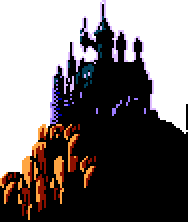 |
Japanese Logo
|
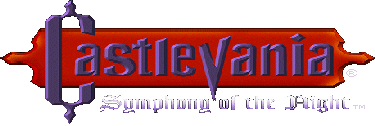 |
 |
|
|
|
|
Click here for the
Sega Saturn version -- Akumajou Dracula X: Nocturne In the Moonlight
| . | . | . | ||
|
General
Information
|
||||
|
|
||||
| Date Released: 1997 |
|
Heroes: Alucard | Secret: Richter Belmont | ||
|
|
||||
| Stage Number: 26 Castle Sections |
|
Size: 484MB | ||
|
|
||||
|
Original
System(s)
Sony Playstation |
||||
|
|
||||
|
Ported
To
Sega Saturn | Xbox 360 (Live Arcade) | Sony PSP | PS3 (Playstation Network) |
||||
|
...................... .....Alternate
Names/Systems
(1) Akumajou Dracula X: Gekka no Yasoukyoku -- translation: Demon Castle Dracula X: Nocturne in the Moonlight (Japan) (2) Sega Saturn: Akumajou Dracula X: Gekka no Yasoukyoku -- translation: Demon Castle Dracula X: Nocturne in the Moonlight (Japan) (3) LCD Tiger Handheld: Castlevania: Symphony of the Night (not an actual recreation) |
||||
|
|
||||
|
Re-release Info. 1998: Re-released
as part of the Sony Playstation "Greatest Hits" series |
||||
|
|
||||
|
Manual Story Description It was Richter Belmont, the legendary vampire hunter, who succeeded in finally ending the menace of Count Dracula, Lord of the Vampires who had been brought back from the grave by the dark priest Shaft. However, one night 4 years later, under the glare of a full moon, Richter mysteriously vanished. With no idea of where to begin her search, Maria Renard set out to look for him. It was then that fate intervened. Castlevania, the castle of Dracula, which is rumored to appear once every century, suddenly materialized from out of the mist as if to show her the way. Meanwhile, powerful forces were struggling for the soul of a man named Alucard. The very same Alucard who had teamed up with Trevor Belmont to battle his immortal father, Count Vlad Tepes Dracula. Alucard, in order to purge the world of his own cursed blood line, had submerged his vampiric powers and entered into what was supposed to be an eternal slumber. But now, he is awake and aware of the evil once again at work in his homeland. The time has once again come for the forces of Good and Evil to engage in their ancient battle. Dracula's castle beckons you... And no man can say who shall emerge victorious. |
||||
|
|
||||
|
Objective/Overview In wanting to test its creative ability on a true CD-based 32-bit system, Konami maneuvered its series onto Sony's Playstation console. It's here where the company wanted to try something a little different: By borrowing tried-and-true elements of the Metroid series while hearkening back to the adventure-RPG style of play present in Castlevania II: Simon's Quest's, Konami created perhaps the series' strongest pillar in Castlevania: Symphony of the Night. It's also the first series' title that doesn't center around a Belmont hero; rather, you play as Alucard, the half-breed son of Dracula who you'll remember from Castlevania III: Dracula's Curse, and you'll reacquaint yourself with a hero who has since grown considerably in power . (Though, you can play as secret character Richter Belmont if the game is cleared under certain conditions.) Your goal in this adventure-RPG is to take control of Alucard and lead him around and about twenty-six torturous castle sections to solve the mystery of Richter Belmont's disappearance. If in meeting this goal certain conditions are met, your adventure will continue on and a whole new mystery will unfold. At Alucard's disposal is an RPG system that allows him to gain experience through battles and thus gain levels; to better his stats; and to therein collect hundreds of weapons and items that will affect the condition of his stats in different ways. Additionally, he can collect relics that allow him to change form, to execute special moves, and to call upon diminutive helpers; also, by experimenting with button combinations, he can learn new spells. |
||||
|
|
||||
|
Port Differences Sega Saturn: For a complete overview of the Saturn version, please click here. Xbox 360 (Live Arcade): (1) Some glitches, like those that allow characters to pass through walls and floors, have been cleaned up. (2) Richter's "Final Stage: Bloodlines" activities and performance against Dracula have no bearing on Alucard's starting stats. (3) Some weapons' effectiveness has been lessened. (4) The restrictions on experience and levels gained are loosened (in part due to some enemies handing out more experience). (5) The Sword Brothers spell can be cast immediately upon attainment of the Sword Familiar. (6) As is standard with Xbox Live arcade titles, this version of Symphony features online leaderboards, based on quick completion times, and achievements. And (7) I Am the Wind, which played during the credits, has been replaced by Admiration Towards the Clan, which was Lament of Innocence's ending theme. (Thanks to G-Blade and ReyVGM for most of this information.) Sony PSP (The Dracula X Chronicles): (1) The title screen has by necessity a "Quit" option, which returns you to Chronicles' title screen. (2) Alucard's game intro now has narration to go along with a reworded prologue. (3) The original game's voice acting has been replaced, the scenes now re-acted by the same performers who provided their services for the regular and remade versions of Rondo of Blood; too, the content of the conversations has been altered--somewhat toned down from the original's heavier subject-matter. (4) There are a lot of sound effect changes. (5) The Abandoned Mine has had its name changed to "Abandoned Pit to the Catacomb." (6) Alucard and other playable/supporting characters' voice samples have been changed as a result. (7) The in-game start menu has been changed and now includes the option "Quick Save," which allows you to save your progress at any time and resume right from the very same position upon continuing. (8) The inventory screen now has a "Quit" option, which returns you to the title screen. (9) In order to attain the Holy Glasses, you must battle Maria Renard, who fights quite differently than her Saturn counterpart--she's instead patterened after her younger self as played in Rondo of Blood. (10) If Alucard stands still long enough while the Faerie Familiar is activated, it will begin to sing the English-lyric version of the song Nocturne. (11) If you escape from the Shaft battle using a Library Card, the preamble cut-scene will upon reentering his chamber play again. (12) The Sprite and Tengu Goblin familiars, which appeared in the Japanese Playstation and Saturn versions but removed from western versions, are present in this version. (13) The item-placement matches the original Japanese Playstation version. (14) I Am the Wind, which played during the credits, has been replaced by Mournful Serenade, a more traditional track. And (15) upon completing Alucard's mission, you can play as Maria in an unrelated mission, as you can with Richter. Note that Maria's play-style is unique to this game and has no connection with the Sega Saturn version, which this is definitely not. |
||||
|
Japanese/European Differences The Japanese Playstation version has some differences. (1) Mainly, it has two exclusive familiars: A "sprite familiar" (which resembles the "faerie familiar") that can use a music card to sing a song; it's located in Olrox's Quarters. The other is the "Tengu Goblin," a funny-voiced familiar with a sizable nose; it can be found in the Colosseum. The voice is apparently that of a famous Japanese actor, and its inclusion was meant as a joke. You can see screenshots of the sprites in action on Saturn page, under its "Japanese Differences," or in the weapons section under "Familiars." (2) This version features more in the way of blood and gore. (3) There are the usual name deviations. Most notably: Richter and Trevor are recognized as "Belmondo." Also, thornweeds are known as "Unes," Stone Roses are "Man-Eating Flowers," Cave Trolls are "Chupacabras," Hellfire Beasts are "Amdusias," Diplocephaluses are "Amphisbaenas," Karasumans are "Malphuses," Skeleton Dancers are "Skeleton Jumpers," Cloaked Knights are "Flying Armor" and Lossoths are "Biphrons." Plus Malachi and Ctulhus' names are reversed for copyright reasons (the Cthulhu character was created by author H.P. Lovecraft, and Konami's version was too close in illustration). To more effectively learn about these changes, check Aria of Sorrow's page--since it wasn't victim to much localization as far as name-changes, many enemies therein show up under their true names. (4) Finally, in general, it's any easier game; that is, it's about Harmony-level. (Thanks to j_eggleton2, Sam, and Saint of Athena for this information.) The most notable port was released for the Sega Saturn (the superior of the two 32-bit systems in regard to 2D capabilities) only in Japan under the same name: Nocturne in the Moonlight. This updated version features four never-before-seen areas (two per castle) and the ability to play as both Richter Belmont and Maria Renard from game's start. Neither, though, has a purposeful mission, as these exist only to supply a more classic style of Castlevania action. For more on Japanese differences, see its page. |
||||
|
Soundtrack and Credits Soundtrack Links |
||||
|
|
||||
|
Other Characters Lesser Enemies:
Ape
Skeleton, Archer,
Armor Lord, Axe Knight, Azaghal, Balloon Pod, Bat, Bitterfly, Black
Crow, Black Panther, Blade, Blade Master, Blade Soldier, Blood Skeleton,
Bloody Zombie, Blue Raven, Blue Venus Weed, Bomb Knight, Bone Archer,
Bone Ark, Bone Halberd, Bone Musket, Bone Pillar, Bone Scimitar, Cave
Troll, Cloaked Knight, Corner Guard, Corpseweed, Ctulhu, Dark Octopus,
Dhuron, Diplocephalus, Discus Lord, Dodo Bird, Dragon Rider, Ectoplasm,
Fire Demon, Fire Warg, Fish Head, Flail Guard, Flea Armor, Flea Man,
Flea Rider, Flying Zombie, Mad Frog, Frozen Half, Frozen Shade, Ghost,
Ghost Dancer, Gorgon, Grave Keeper, Gremlin, Guardian, Gurkha, Hammer
Knight, Harpy, Hellfire Beast, Hunting Girl, Imp, Jack O' Bones, Killer
Fish, Large Slime, Lion, Lossoth, Magic Tome, Malachi, Marionette, Medusa
Head, Yellow Medusa Head, Fishman, Mudman, Nova Skeleton, Orobourous,
Ouija Table, Owl, Owl Knight, Paranthropus, Phantom Skull, Plate Lord,
Rock Knight, Salem Witch, Salome, Scarecrow, Schmoo, Scylla Wyrm, Skelerang,
Skeleton, Skull Lord, Slime, Slinger, Sniper of Goth, Spear Guard, Spectral
Sword, Spellbook, Spittle Bone, Stone Rose, Stone Skull, Sword Lord,
Thornweed, Tin Man, Toad, Tombstone, Valhalla Knight, Vandal Sword,
Venus Weed, Warg, Warg Rider, Wereskeleton, White Dragon, Winged Guard,
Yorick and Zombie
|
||||
|
|
||||
|
Character Lists |
||||
| . | . | . | ||
![]()
Main Arsenal
|
Hero Image
|
Statistics
|
|
|
|
Full Name: Alucard (real name: Adrian Farenheights Tepes) | |
| Main Weapon: Fists and Flying Kick | ||
| Weapon Power-Up: Click here for Alucard's comprehensive list | ||
| Alternate Weapons: Click here for Alucard's comprehensive list | ||
| Sub-Weapon Power-Up: None | ||
| Special Abilities: Can turn into a bat, a wolf and mist; he can also double-jump, super jump, back-dash, jump kick and use spells | ||
| Armor: Click here for Alucard's comprehensive list | ||
|
|
|
Hero
Image
|
Statistics
|
|
|
|
Full Name: Richter Belmont | |
| Main Weapon: Vampire Killer Whip | ||
| Weapon Power-Up: Flame Whip | ||
| Alternate Weapons: None | ||
| Sub-Weapon Power-Up: Can item-crash all mystic weapons | ||
| Special Abilities: Can backflip, slide kick (with a combo), run, dash and super jump; he can also brandish the whip | ||
| Armor: None | ||
|
Limitations: On the surface, Richter is very much similar to his Dracula X counterparts, but he's much more equipped than you'd think. He's still bound to whipping in two directions, but he has two alternate methods: He can call forth a long-lasting flame power if no sub-weapon is equipped, and he can now brandish the whip as Simon could in Super Castlevania IV. While he retains the defensive backflip, he can now pull off all of the moves you see listed under "Special Abilities." These slide, dash and super jump techniques are necessary to Richter because in addition to acting as offensive moves, they supply him accessibility where the game wasn't made with a traditional hero in mind; only by mastering these moves can he complete his mission. Richter has available all of the same nine sub-weapons, three of which (bibuti, aguen and rebound stone) are new to him; unlike Alucard, Richter can amplify the effect of each sub-weapon by utilizing the all-powerful item-crash ability. Richter is indeed powerful, and hardly any boss short of Galamoth is a real match for him. |
|
Weapon
Name
|
Weapon
Image
|
Description
|
|
Fists
|
|
Without
a weapon equipped, Alucard will rely on short jabs
|
|
Vampire
Killer
|
|
Steel-enhanced
family-created whip
|
|
Flame
Whip
|
|
Richter
and his whip become enflamed and thus more powerful
|
|
Magical
Items
|
|||
|
Item Name
|
Image
|
Found In
|
Usage
|
|
Heart
|
|
Candle, Structure
|
Powers Mystic
Weapons
|
|
Big Heart
|
|
Candle, Structure
|
Powers Mystic Weapons
|
|
Coin
|
|
Candle, Structure
|
Currency
|
|
Money Bag
|
|
Candle, Structure
|
Currency
|
|
Uncurse Potion
|
|
Candle
|
Cures Curse Status
|
|
Life Vial
|
|
Boss, Candle, Secret
Room
|
Increases Life Maximum
|
|
Heart Container
|
|
Candle, Secret Room
|
Increases Heart
Maximum
|
|
Sub-Weapons
|
|||
|
Weapon
Name
|
Image
|
Heart Consumption
|
Comments
|
|
Dagger
|
|
(Alu) 1 -
(Rich) 1
|
-
|
|
Holy Water
|
|
(Alu) 3 -
(Rich) 1
|
-
|
|
Cross
|
|
(Alu) 100
- (Rich) 1
|
Alucard only
uses crash
|
|
Axe
|
|
(Alu) 4 -
(Rich) 1
|
-
|
|
Stopwatch
|
|
(Alu) 20 -
(Rich) 10
|
-
|
|
Holy Book
|
|
(Alu) 5
- (Rich) 5
|
-
|
|
Rebound Stone
|
|
(Alu) 2
- (Rich) 1
|
-
|
|
Aguen
|
|
(Alu) 5
- (Rich) 10
|
Hold Button for
Effect
|
|
Bibuti
|
|
(Alu) 3
- (Rich) 1
|
-
|
![]()
Screenshots & Media
Local Title Screens
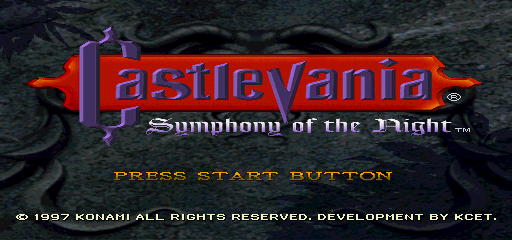 |
|
U.S.
Title Screen
|
Action Shots
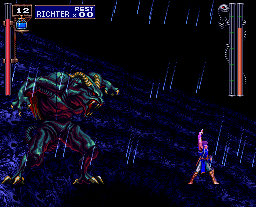
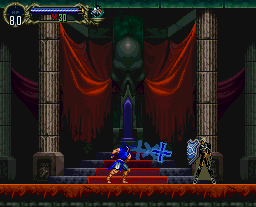

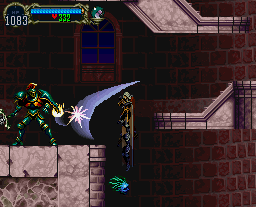
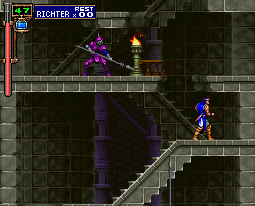
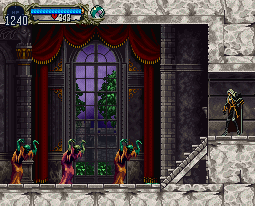
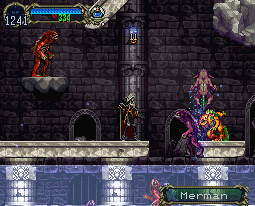

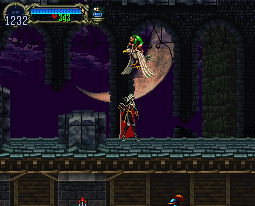

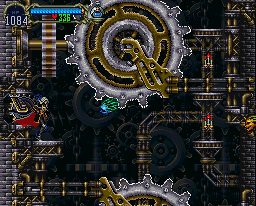
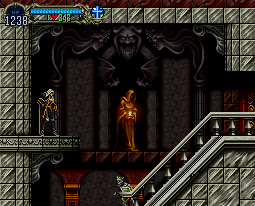



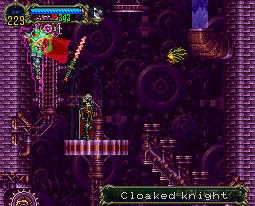
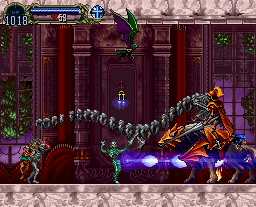
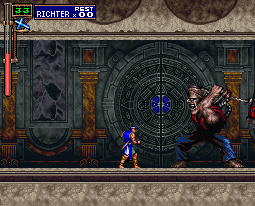
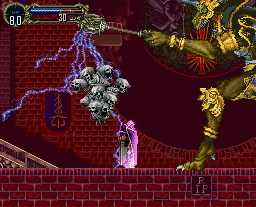

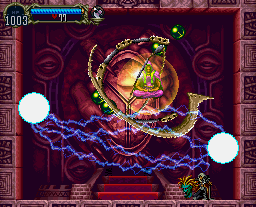
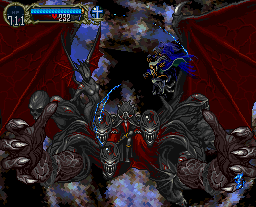
|
Tiger Handheld
Screenshots
|
|
|
LCD Version
Screenshots
|
The Canceled
Game.com Version
|
|
Quick-Reference
Links
|
||
|
Category
|
Availability
|
What's
Inside
|
|
Stages:
|
A look at
each castle section -- for the reverse castle, too
|
|
|
Review:
|
I've got a
big review for the most packed Castlevania title ever
|
|
|
Codes:
|
In-Game Maps
and Quotas | Unlock Characters | Much More
|
|
|
Magazine
Coverage
|
|
|
Item Name
|
Description
|
|
The heroes caught
in an odd pose after apparently torching the joint
|
|
|
The official Japanese
guide features artwork, strategies and more
|
|
|
This is another
official Japanese guide, typical of the branding
|
|
|
Yet another "official
guide," it's an information source all the same
|
|
|
A 1997 issue features
an advertisement (contributed by Megamedia)
|
|
|
IGA discusses the
Playstation classic (contributed by Anonymous)
|
|
Text Documents
and Help Files
|
||
|
Walkthroughs
|
FAQs
|
Other Files
|
|
-
|
-
|
|
|
-
|
-
|
|
|
-
|
-
|
|
|
-
|
-
|
|
|
-
|
-
|
|
|
-
|
-
|
|
|
Scenes,
Packaging Scans and More
|
||
|
American
Version
|
Japanese
Version
|
European
Version
|
|
-
|
||
|
-
|
||
|
-
|
||
|
-
|
||
|
-
|
||
|
-
|
-
|
|
|
-
|
-
|
|
|
-
|
-
|
|
|
-
|
-
|
|
|
-
|
-
|
|
|
[Home] [What's New?] [CV Library] [Stages] [Reviews] [Weapons] [Castleography] [Multimedia] [Codes] [Links] |
||||

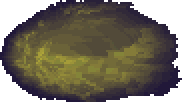 Limitations:
Alucard is very different than you'll remember
from his Dracula's Curse stint: He's faster, stronger, more agile
and utterly controllable. His rather weak fists act as his main offense,
and his normal defense is only standard. Though, he'll collect hundreds
of swords, clubs, throwing weapons, armor/gear utilities, etc. that
will help to increase all of his attributes exponentially. Both his
health and magical power are measured by respective meters, and both
can be increased in potency by the gaining of levels and through the
location of power-ups. He'll also collect relics that will allow him
to change form, from a bat, to a wolf, to a mist cloud (regular
and poison);
Limitations:
Alucard is very different than you'll remember
from his Dracula's Curse stint: He's faster, stronger, more agile
and utterly controllable. His rather weak fists act as his main offense,
and his normal defense is only standard. Though, he'll collect hundreds
of swords, clubs, throwing weapons, armor/gear utilities, etc. that
will help to increase all of his attributes exponentially. Both his
health and magical power are measured by respective meters, and both
can be increased in potency by the gaining of levels and through the
location of power-ups. He'll also collect relics that will allow him
to change form, from a bat, to a wolf, to a mist cloud (regular
and poison);  some
that afford him special moves, like the double jump; some that conjure
familiars; and others that offer unique abilities, such as the power
to walk within water. If that's not enough: He can learn several
deadly spells and those with the propensity to heal. Finally, Alucard
can use nine sub-weapons (six typical and three unique) to supplement
his sizable arsenal.
some
that afford him special moves, like the double jump; some that conjure
familiars; and others that offer unique abilities, such as the power
to walk within water. If that's not enough: He can learn several
deadly spells and those with the propensity to heal. Finally, Alucard
can use nine sub-weapons (six typical and three unique) to supplement
his sizable arsenal.